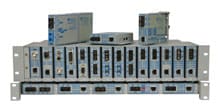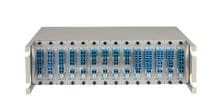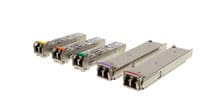- Products
- PoE Media Converters and Switches
- Ethernet & PoE Switches Product Selector
- Multi-Gigabit Ethernet and PoE Switches
- PoE PSE Commercial Switches
- PoE PSE Industrial Fiber Switches
- PoE Industrial Copper Extenders
- PoE Powered Media Converters
- PoE PSE Media Converters
- PoE Extenders & Injectors Product Selector
- Pluggable Transceivers Product Selector
- Product Lines
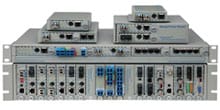
- iConverter Managed Multi-service Platform
- Copper to Fiber Media Converters
- Ethernet Media Converters
- 10 Gigabit Copper-to-Fiber
- 10/100/1000 Copper to 10 Gigabit Fiber
- 10/100/1000 Copper-to-Fiber with Integrated Management
- 10/100/1000 Industrial Copper-to-Fiber with Integrated Management
- 10/100/1000 Copper-to-Fiber with VLAN
- 10/100/1000 Dual Media Converter with VLAN
- Gigabit Copper-to-Fiber
- 10/100 Copper-to-Fiber with Integrated Management
- 10/100 Industrial Copper-to-Fiber with Integrated Management
- 10/100 Copper-to-Fiber with VLAN
- 10/100 Copper-to-Fiber
- Fast Ethernet Copper-to-Fiber
- Fast Ethernet Redundant Links
- 10Mbps Copper-to-Fiber
- 10Mbps Copper to Coax
- TDM Media Converters
- Serial Media Converters
- Ethernet Media Converters
- Fiber to Fiber Media Converters
- 10 Gigabit Fiber-to-Fiber Converter and Transponder
- 10 Gigabit Industrial Converter and Transponder
- SFP-to-SFP Fiber Converter and Transponder
- SFP-to-SFP Industrial Fiber Converter and Transponder
- Gigabit Fiber to-Fiber with 3 Rs
- 100/1000 Fiber-to-Fiber with 3 Rs
- Gigabit Fiber-to-Fiber
- Fast Ethernet Fiber-to-Fiber with 3 Rs
- Fast Ethernet Fiber-to-Fiber
- OC-3/STM-1 Fiber-to-Fiber
- OC-12/STM-4 Fiber-to-Fiber
- Carrier Ethernet Network Interface Devices
- CE 2.0 - 10G Demarcation NID
- CE 2.0 - 10G Demarcation and Aggregation NID
- CE 2.0 - 10/100/1000 Mult-port NID
- CE 2.0 - 10/100/1000 Mult-port NID with PoE
- CE 2.0 - 10/100/1000 8-Port NID
- SFP NID - Gigabit SFP NID
- microNID - 100/1000 compact NID
- CE 1.0 Service OAM - 10/100/1000 NID
- CE 1.0 Link OAM - 10/100/1000 Copper-to-Fiber NID
- CE 1.0 Link OAM - 10/100 Copper-to-Fiber NID
- CE 1.0 Link OAM - Gigabit Fiber-to-Fiber NID
- CE 1.0 Link OAM - Fast Ethernet Fiber-to-Fiber NID
- CWDM Multiplexers
- T1/E1 Multiplexers
- Ethernet Switch Modules
- Management System
- Chassis Options

- 1-Module Industrial Chassis
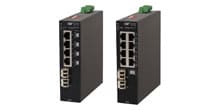
- RuggedNet Industrial Switches and Extenders
- Industrial PoE PSE Fiber Switches
- Multi-Gigabit Managed Industrial PoE+/BT Switches
- Multi-Gigabit Unmanaged Industrial PoE+/BT Switches
- 10G Managed 802.3bt PoE Switches
- 10G Unmanaged 802.3bt PoE Switches
- 10G Managed PoE+ Switches
- 10G Unmanaged PoE+ Switches
- 1G Managed PoE+ Switches
- 1G Unmanaged PoE+ Switches
- 1G Unmanaged 802.3bt PoE Switches
- 1G Managed 802.3bt PoE Switches
- Industrial Ethernet Switches
- Industrial PoE Copper Extenders
- Industrial Power Supplies

- OmniConverter Media Converter, Switches and Extenders
- PoE PSE Media Converters
- 10G Multi-Gigabit / Multi-Rate PoE Media Converter
- 10G Multi-Gigabit / Multi-Rate Media Converter
- 10/100 Multi-port PoE+ Media Converter
- 10/100 PoE+ Media Converter
- 10/100/1000 Multi-Port PoE+ Media Converter
- Industrial 10/100/1000 Multi-Port PoE+ Media Converter
- 10/100/1000 PoE+ Media Converter
- 10/100/1000 PoE++ 60W-100W Media Converter
- Industrial 10/100 Multi-port PoE+ Media Converter
- 1U Rack-Mount Shelf
- PoE PSE Compact Switches
- Multi-Gigabit Managed PoE+/BT Switches
- Multi-Gigabit Unmanaged PoE+/BT Switches
- 10G Managed 802.3bt PoE Switches
- 10G Unmanaged 802.3bt PoE Switches
- 10G Managed PoE+ Switches
- 10G Unmanaged PoE+ Switches
- 1G Managed PoE+ Switches
- 1G Unmanaged PoE+ Switches
- 1G Managed 802.3bt PoE Switches
- 1G Unmanaged 802.3bt PoE Switches
- Ethernet Switches
- PoE Copper Extenders
- Single Pair Ethernet Converters
- PoE Injectors
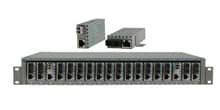
- miConverter Unmanaged Miniature Media Converters
- 10/100/1000 Copper-to-Fiber
- Industrial 10/100/1000 Copper-to-Fiber
- 10/100/1000 Ultra-Compact Copper-to-Fiber
- Gigabit Copper-to-Fiber
- 10/100/1000 Copper-to-Fiber PoE Powered
- 10/100 Copper-to-Fiber
- 10/100 Ultra-Compact Copper-to-Fiber
- 10/100 Copper-to-Fiber PoE Powered
- 18-Module Chassis
- Industrial 10/100 Copper-to-Fiber PoE Powered
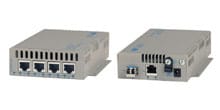
- FlexSwitch Compact Switches
- Solutions
- Company
- Support
- How to Buy
CWDM Multiplexers and Their Role in Future-Proofing Network Infrastructure

As network demands grow, enterprises are constantly seeking efficient and scalable solutions to meet the need for greater bandwidth. Coarse Wavelength Division Multiplexing (CWDM) multiplexers have emerged as an ideal choice for organizations looking to enhance their network capacity while maintaining cost-effectiveness.
This post explores the significance of CWDM multiplexers in modern networks and how they play a critical role in future-proofing network infrastructure.
What Are CWDM Multiplexers?
CWDM multiplexers are passive optical devices that combine multiple signals onto a single fiber optic cable by assigning each signal a different wavelength. This technique allows for better use of existing fiber infrastructure, reducing the need for new fiber installations while providing high data throughput. The use of CWDM multiplexing is crucial in modern telecommunications and data center environments, offering a flexible solution to expand network capacity.
Unlike Dense Wavelength Division Multiplexing (DWDM), CWDM operates over fewer wavelengths, typically using 18 channels spaced 20nm apart in the 1270-1610nm range. This wider spacing reduces equipment costs and simplifies network maintenance.
CWDM Mux Demux: Key Component in CWDM Technology
At the heart of CWDM systems lies the CWDM mux demux device, which performs the essential function of combining and separating optical signals. A CWDM mux (multiplexer) is used to merge multiple optical signals for transmission over a single fiber, while a CWDM demux (demultiplexer) separates these signals at the receiving end.
These CWDM mux demux units are typically passive, meaning they require no external power source to operate. This feature enhances their efficiency and lowers operational costs. A passive CWDM system is highly reliable and can be deployed in a wide range of environments without significant power consumption.
The Role of CWDM OADM in Expanding Network Flexibility
The CWDM OADM (Optical Add-Drop Multiplexer) is another critical element in CWDM networks. It enables specific wavelengths to be added or dropped from the multiplexed signal without interfering with the remaining channels. This capability provides enhanced flexibility in network design, allowing for incremental bandwidth upgrades as needed without replacing the entire network infrastructure.
How CWDM Multiplexers Future-Proof Network Infrastructure
CWDM technology provides several key benefits that make it an ideal choice for future-proofing network infrastructure:
Cost-Effectiveness: CWDM systems are generally more affordable than their DWDM counterparts due to their use of passive components and the wider channel spacing, which reduces the complexity of the optical components. For businesses with budget constraints, the relatively low CWDM mux demux price offers a clear advantage.
Scalability: CWDM fiber optic multiplexers are highly scalable, allowing organizations to add channels as their bandwidth needs grow. Whether deploying a CWDM 8 channel system or a 16 channel CWDM multiplexer, network operators can scale as needed without major overhauls to the infrastructure.
Simplified Infrastructure: With the ability to transmit multiple signals over a single fiber, mux CWDM systems reduce the need for laying additional fiber optic cables. This is particularly beneficial for organizations in areas where fiber installations are expensive or difficult to implement.
Passive Operation: Passive CWDM multiplexers don’t require external power, reducing energy costs and making them an environmentally friendly option. This also minimizes potential points of failure, increasing the overall reliability of the network.
Future Compatibility: CWDM technology is compatible with various existing and future network technologies, such as active CWDM multiplexers. By future-proofing network infrastructure with CWDM, organizations ensure they can handle evolving bandwidth demands.
Omnitron CWDM Mux: A Leading Solution for Modern Networks
Among the leading products in the CWDM space is the Omnitron CWDM mux, a popular choice for businesses looking for robust and reliable solutions. Omnitron’s CWDM multiplexers provide exceptional performance and are designed for seamless integration into existing network infrastructures. They support a range of configurations, including 8 channel CWDM systems and single-fiber CWDM setups, making them adaptable to various networking needs.
The Importance of CWDM Multiplexers in Data Centers
Data centers are the backbone of modern internet infrastructure, and the demand for bandwidth is ever-increasing. CWDM fiber optic multiplexers are indispensable in data centers as they enable high-speed data transfer while optimizing fiber utilization. In these environments, CWDM multiplexing ensures that operators can scale operations cost-effectively without the need for additional fiber deployment.
CWDM Multiplexers in Metro Networks
Metro networks, which connect large metropolitan areas, are another crucial area where CWDM multiplexers shine. These networks require high bandwidth, but service providers must balance cost-efficiency with scalability. CWDM add-drop multiplexers allow operators to incrementally add capacity to meet growing demand without overhauling their entire infrastructure.
Role of CWDM Multiplexer in ISP Connectivity
For Internet Service Providers (ISPs), maintaining high-speed, reliable connectivity while minimizing infrastructure costs is critical. CWDM multiplexers play a vital role in achieving this by allowing ISPs to transmit multiple data channels over a single fiber optic cable, optimizing bandwidth without the need for laying additional fiber.
Using CWDM multiplexing, ISPs can expand their network capacity and support increasing data demands from residential, commercial, and enterprise clients. By deploying CWDM mux demux solutions, ISPs can offer higher speeds and greater bandwidth without incurring substantial operational costs. Additionally, passive CWDM technology, which doesn’t require power, ensures cost-efficient and reliable network operation, reducing the need for active equipment along the network path.
The flexibility of CWDM multiplexers also allows ISPs to easily scale their networks. With configurations like 8-channel CWDM multiplexers for smaller networks or 16-channel CWDM multiplexers for larger deployments, ISPs can add channels as customer demand grows.
Video Distribution and CWDM Multiplexers
CWDM multiplexers enable the transmission of multiple video signals on different wavelengths through a single optical fiber, reducing the need for additional infrastructure. This is particularly useful in environments where bandwidth is at a premium, such as large data centers, broadcasting facilities, and service provider networks. With CWDM mux demux technology, video streams can be sent over long distances without compromising quality or performance, ensuring a seamless experience for end-users.
The scalability of CWDM multiplexing makes it an ideal solution for video distribution networks that need to grow rapidly. This flexibility allows content providers and ISPs to meet increasing demand for high-definition (HD) and ultra-high-definition (UHD) video content
CWDM Multiplexers in PON (Passive Optical Network)
PONs, which are primarily used by telecommunications companies to deliver internet, voice, and video services to residential and business customers, rely on passive components to transmit data. Integrating CWDM multiplexing technology into PON infrastructure enables service providers to increase bandwidth capacity and deliver more services over existing fiber without requiring active components, making it a cost-efficient and scalable solution.
By deploying CWDM multiplexers, service providers can assign separate wavelengths to different types of data, such as internet, voice, and video, over the same fiber. This capability allows for more efficient traffic management and reduces bottlenecks, leading to better service quality for users.
CWDM mux demux devices play a crucial role in separating and combining these different wavelengths, enabling multiple services to run in parallel. For instance, passive CWDM multiplexers can be used to aggregate data streams from multiple Optical Line Terminals (OLTs) in a central office, combining them onto a single fiber for distribution. At the customer premises, CWDM demux units separate the wavelengths for delivery to the appropriate Optical Network Units (ONUs), ensuring efficient and reliable service provision.
The use of CWDM add-drop multiplexers (OADM) in PONs further enhances network flexibility by allowing specific wavelengths to be added or dropped at different locations, optimizing bandwidth distribution across the network. This is particularly beneficial for service providers that want to offer differentiated services to various customer groups or geographic areas without the need for costly network overhauls.
The Economics of CWDM Systems
One of the major selling points of CWDM technology is its affordability. The CWDM mux demux price is considerably lower than that of DWDM systems due to the use of wider channel spacing and passive components. Moreover, the CWDM passive multiplexer does not require expensive cooling systems, as the devices generate minimal heat.
For businesses looking to balance performance and cost, CWDM mux/demux devices offer a great return on investment, especially when compared to the higher mux demux CWDM price of more complex systems.
Channel Configurations: 8 Channel and 16 Channel CWDM Multiplexers
CWDM multiplexers are available in various channel configurations, with the 8-channel and 16-channel CWDM multiplexers being the most popular due to their adaptability and scalability. An 8-channel CWDM multiplexer is ideal for small to mid-sized enterprises that need to expand their network capacity without significant investments in infrastructure. This configuration supports up to eight different wavelengths, enabling efficient use of a single fiber optic cable for multiple data transmissions.
On the other hand, the 16-channel CWDM multiplexer is perfect for larger organizations or data centers that require greater bandwidth and scalability. By accommodating up to 16 separate wavelengths, this configuration allows for higher data throughput, making it suitable for environments where extensive data traffic or multiple applications are running simultaneously. Additionally, the 16-channel configuration offers the flexibility to add channels incrementally, allowing businesses to scale their networks as their needs grow.
Both configurations—8 channel CWDM and 16 channel CWDM—support passive operation, making them energy-efficient and reliable. Moreover, they can be combined with CWDM OADMs to provide even greater network flexibility by adding or dropping specific wavelengths without affecting the entire system. Whether you choose an 8-channel or 16-channel solution, CWDM multiplexers offer a cost-effective way to future-proof your network while maximizing fiber utilization and simplifying infrastructure.
Active vs. Passive CWDM Multiplexers
While most CWDM systems are passive, some organizations opt for active CWDM multiplexers to enhance performance. Active CWDM multiplexers incorporate amplification and signal processing, allowing for longer transmission distances and higher data rates.
However, passive CWDM remains the dominant choice due to its simplicity, reliability, and cost-efficiency. CWDM passive multiplexers can handle a broad range of network scenarios without the need for additional power or complex maintenance procedures.
Conclusion
As organizations continue to demand more from their networks, CWDM multiplexers offer a practical solution for meeting today’s challenges while preparing for tomorrow’s growth. Their combination of scalability, cost-effectiveness, and compatibility with existing network infrastructure makes them an essential tool for network operators looking to future-proof their systems.
Whether deploying a CWDM 8 channel system in a data center or a CWDM single-fiber solution in a metro network, businesses can trust CWDM technology to provide the flexibility and performance they need. Additionally, the relatively low CWDM mux demux price further strengthens the case for adopting this future-proof technology in both small and large-scale networks.
By investing in CWDM multiplexing solutions today, organizations can ensure their network infrastructures are well-equipped to handle future demands, making CWDM a critical component in the ongoing evolution of communication technologies.
If you're looking to future-proof your network, contact Omnitron Systems today for expert guidance. You can also request a quote to explore how our cutting-edge technologies can fit into your infrastructure plans.

